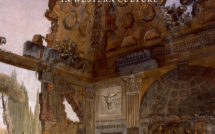
Disease, Plague, and Pandemics in Antiquity and Medieval World

This is part of our Campus roundtable on Teaching Medieval in Modern Plague Times.
Course description (Fall 2020, online synchronous)
Hi everyone! My name is Dr. (or Professor) Esther Cuenca. You pronounce my last name kweng-kah. This class is an advanced European history course that I’ve titled “Disease, Plague and Pandemics in Antiquity and the Medieval World.” Our goal this semester is to understand how people in the pre-modern world (that is, prior to 1800), particularly in Europe, discussed, reacted, and tried to remedy contagious diseases before the advent of modern medicine and scientific understandings of immunology and virology. In so doing, we can gain a better understanding of how humanity has wrestled with the social problems posed by infectious diseases. We also focus on how pandemics either disrupt or maintain the political, religious, or economic status quo in communities afflicted by them.
It is of course not lost on any of us that this class is being offered during the COVID-19 pandemic and that, to ensure maximum safety for all, it will be conducted as a “Real-Time Online” course. This means that we will meet, live on Microsoft Teams. Students enrolled in this course are expected to give a virtual presentation, participate virtually in discussion about the readings, and attend this remote class from their dorms or homes at the designated times. There will be no final or midterm exams. Instead, students will be evaluated on their presentations, participation, reading and multimedia journals, a self-reflection paper, and a final project that creates a historical artifact about their personal experiences with COVID-19.
Required textbooks
- Frank M. Snowden, Epidemics and Society: From the Black Death to the Present (New Haven: Yale University Press, 2019).
- Disease, Plague, and Pandemics in Antiquity and the Medieval World: A Sourcebook. Edited by Esther Cuenca. Free to download from Blackboard.
Note: All other readings listed below in the schedule will be free to download from Blackboard.
Student learning outcomes
- To articulate and understand the multiple perspectives and varieties of experiences of communities that dealt with infectious diseases in the pre-modern world (prior to 1800), particularly the ancient and medieval worlds.
- To show a basic familiarity with the discipline of pre-modern history— how various approaches to primary sources can be undertaken and how to ask critical questions about them.
- To reflect on how understanding history is shaped by our present circumstances, and to recognize continuity and change when examining the events and sources of the past, particularly those having to do with pandemics and disease.
Assignments and grading
- Reading Journals (32%): Students are responsible for completing eight (8) Reading Journal entries on Blackboard, all of which will be due at least one day before class. Each entry is worth 4% of the grade in the class. Students will be assigned to either Group A or Group B, and due dates for each Reading Journal will depend on what Group a student is in. For the last Reading Journal, all Groups will turn in the assignment. The professor will assign the Groups at the beginning of the semester and post the names of each cohort on Blackboard.
- Multimedia Journal Entries (20%):All Groups will be responsible for turning in four (4) mandatory Multimedia Journal entries on Blackboard before their due dates (listed in the schedule below). Each of these entries are worth 5% each.
- Participation [discussion via Teams in virtual classroom] (15%): Every student is expected, either during the lecture or in dedicated discussion time on Microsoft Teams, to share their thoughts on the assigned readings or videos, or to ask questions during the lecture. It all counts as participation. While students do not have to participate in every class session, they should make sure to get their voices heard once in a while. Students may draw on their Reading or Multimedia Journal entries to kick off discussion or to comment on their classmates’ thoughts. Students who participate on days in which their Group does not have an entry due will get extra credit participation points.
- Presentation (5%): Each student will give a short presentation to the class (on Microsoft Teams) on a primary source having to do with the Black Death. Primary sources and directions for this assignment will be distributed soon.
- Midterm Self-Assessment (8%): Compare your self-assessment that you completed at the beginning of the semester with what you have learned so far. What has surprised you the most? What themes can you detect in our journey through world history so far? How has your evaluation of history (either its importance or how we study it) changed?
- Final Multimedia Project (20%): Students will create multimedia project by compiling artifacts that relate to their COVID-19 experience. They will contextualize these artifacts by writing a personal essay that draws on the historical themes and issues that have been explored in class. This final project will be submitted to the Victoria Regional History Center’s “COVID-19 Stories” digital archive (https://vrhc.uhv.edu/covid-19-stories/). Students will also give a short presentation on Microsoft Teams about their projects during the final exam period. More detailed instructions are forthcoming.
Schedule of classes
| Class number | Topic | Homework due (please note that all Journals are due at least one day before the scheduled class time) |
| UNIT 0: INTRODUCTION | ||
| 1. | Introduction to the course and review of syllabus | No homework, but please orient yourself with Blackboard, the syllabus, download the free Sourcebook, and buy Epidemics & Society book |
| 2. | Introduction to the history of pre-modern Europe and to your classmates | None, but please be prepared to talk about yourself on camera |
| 3. | How do we approach history disease, plague & pandemics in pre-modern world? | Read: Aberth, “Introduction” (Blackboard)
Write and turn in before class: Short reflection essay (not graded) |
| UNIT 1: DISEASES IN THE ANCIENT WORLD | ||
| 4. | Medicine & healing in the ancient world | Read: Epidemics & Society, Ch. 2 (Humoral Medicine)
Read: Sourcebook, 1a, 1b, 1c Group A, write and turn in: Reading Journal #1 (prompts for journals will be on Blackboard), submit all journal assignments through Blackboard at least one day before class |
| 5.
|
Disease & trauma in the ancient world | Read: Sourcebook, 1d, 1e
Group B, write and turn in before class: Reading Journal #2 |
| 6. | Leprosy & plague in Biblical texts | Read: “Leprosy in the Bible” article (Blackboard)
Read: Sourcebook, 1f, 1g Group A, write and turn in before class: Reading Journal #3 |
| UNIT 2: THE FIRST PANDEMIC | ||
| 7. | The Justinian plague in the Mediterranean and the Middle East | Read: Epidemics & Society, Ch. 3 (Overview of the Three Plague Pandemics)
Read: Sourcebook, 2a, 2b Group B, write and turn in before class: Reading Journal #4 |
| 8. | The plague in Gaul, England & Ireland | Read: Sourcebook, 2c, 2d
Group A, write and turn in before class: Reading Journal #5 |
| 9. | Background lecture: the transition to the later middle ages | All Groups, write and turn in: Mid-term assessment (short reflection paper) |
| UNIT 3: THE SECOND PANDEMIC | ||
| 10. | The Black Death: an overview | Read: Epidemics & Society, Ch. 4 (Plague as a Disease)
Read: Sourcebook, 3a Listen: Podcast, “The Black Death and COVID-19 with Winston Black” (link on Blackboard) All Groups, write and turn in before class: Multimedia Journal #1 |
| 11. | The Black Death as a global phenomenon | Read: Sourcebook, 3b, 3c
Group B, write and turn in before class: Reading Journal #6 |
| UNIT 4: LITERARY, RELIGIOUS & LEGAL RESPONSES TO SECOND PANDEMIC | ||
| 12. | The variety of responses to the Black Death: Presentations, Day 1 | Read: Epidemics & Society, Ch. 5 (Responses to Plague)
Read: Sourcebook, 4a Group A, write and turn in before class: Reading Journal #7
Begin Presentations this day (Group A) |
| 13. | The variety of responses to the Black Death: Presentations, Day 2 |
Presentations, cont. (All Groups)
|
| 14. | Decline of serfdom, optional: Presentations, Day 3 | Read: Sourcebook, 4b, 4c
Group B, write and turn in before class: Reading Journal #8
Presentations, if there are any left from Group B |
| UNIT 5: SOCIAL UNREST AFTER THE SECOND PANDEMIC | ||
| 15. | Revolts and rebellions | Read: Sourcebook, 5a
Group A, write and turn in before class: Reading Journal #9 |
| 16. | Persecution of Jews | Read: Sourcebook, 5b, 5c, 5d
Group B, write and turn in before class: Reading Journal #10 |
| UNIT 6: OTHER MEDIEVAL DISEASES AND DISABILITIES | ||
| 17. | Disability and disfigurement | Read: Sourcebook, 6a, 6b
Group A, write and turn in before class: Reading Journal #11 |
| 18. | Influenza and leper hospitals in the later middle ages | Read: Sourcebook, 6c, 6d
Group B, write and turn in before class: Reading Journal #12 |
| UNIT 7: EARLY MODERN MALADIES | ||
| 19. | The sweating sickness and the dancing epidemic | Read: “The Mysterious Dancing Epidemic of 1518” article (Blackboard)
Read: Sourcebook, 7a Group A, write and turn in before class: Reading Journal #13 |
| 20. | Smallpox and syphilis in Europe & the Americas | Read: Sourcebook, 7b, 7c
Group B, write and turn in before class: Reading Journal #14 |
| 21. | The great plague of London | Watch: “Pandemic That Shook London” documentary (link on Blackboard)
Read: Sourcebook, 7d All Groups, write and turn in before class: Multimedia Journal #2 |
| UNIT 8: PRE-MODERN PLAGUES IN OUR MODERN WORLD | ||
| 22. | The third pandemic & cholera | Read: Epidemics & Society, Ch. 13 (Cholera) and Ch. 16 (The Third Plague Pandemic)
Watch: The Horseman on the Roof (1995) (Blackboard) All Groups, write and turn in before class: Multimedia Journal #3 |
| 23. | Disease and plague in modern popular culture | Read: “How to stop coronavirus panic? Analyzing Hollywood outbreak narratives offer clues” article (Blackboard)
Watch: Contagion (2011) (Blackboard) All Groups, write and turn in before class: Multimedia Journal #4 |
| 24. | SARS and Ebola | Read: Epidemics & Society, Ch. 22 (Dress Rehearsals for the 21stCentury: SARS and Ebola) |
| 25.
|
COVID-19 and comparisons to the Black Death | Read: Epidemics & Society, Ch. 21 (Emerging and Reemerging Diseases)
Read: Mary Fissell, “Pandemics come and go. The way people respond to them barely changes” Washington Postarticle (Blackboard) All Groups, write and turn in before class: Reading Journal #15 |
| 26. | A Journal of our Plague Year in Victoria, TX | All Groups, write and turn in before class: Reflection essay on situating your experience with COVID-19 within larger historical context of pandemics |
| 27. | Final projects due | All Groups, write and turn in before exam period: Final projects to your professor |
| Final exam period | All Groups, publish: Final projects online before final exam period.
All Groups, discuss: Your final project with the rest of the class. |
|
Esther Liberman Cuenca is Assistant Professor of History at the University of Houston-Victoria, where she is the designated Europeanist for the school’s history program. She has previously published in EuropeNow on “Medievalism, Nationalism, and European Studies: New Approaches in Digital Pedagogy.” She has articles forthcoming in Popular Music and The Local Historian.
December 8, 2020.




